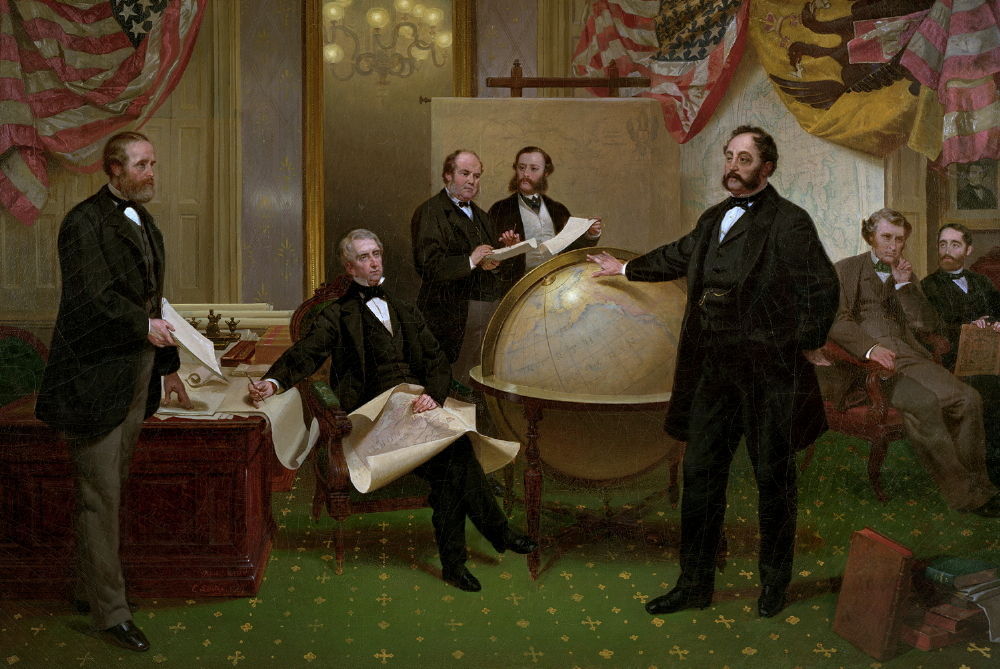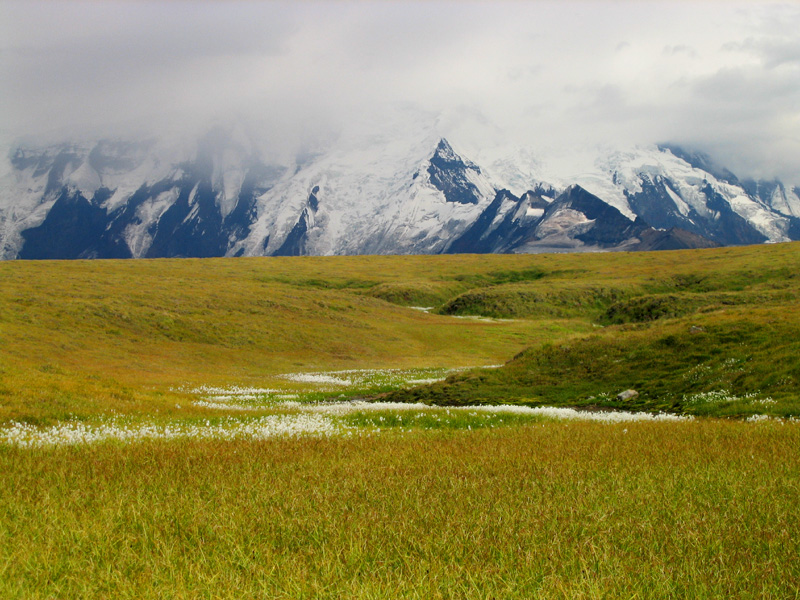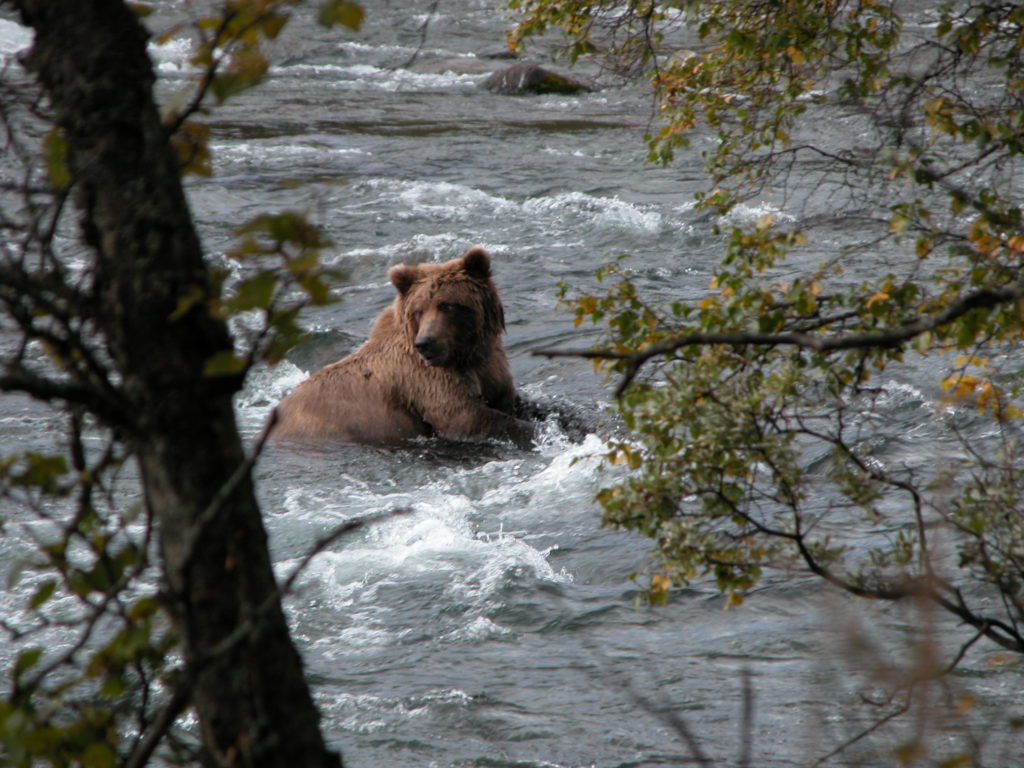If you were given the chance to buy land at 30 cents per acre, would you? Me, too, even if those acres were far away. The U.S. said yes to that decision about 150 years ago, when it bought Alaska from the Russians. The purchase price was actually $7.2 million, or 2 cents per acre (which equates to $113 million, or 30 cents per acre in today’s money).

Many people at the time questioned the purchase, however, because the land was so far away and so cold. The editor of the New York Tribune said Alaska would be a “burden…not worth taking as a gift.” Detractors called it President “Johnson’s Polar Bear Garden.” But Johnson’s Secretary of State, William Seward, was adamant that Alaska was a great purchase, declaring that “Our population is destined to roll resistless waves to the ice barriers of the north….” Years after the purchase, doubters called the Alaska purchase “Seward’s Folly.”
Why did Russia give the U.S. such a deal? Fundamentally, Russia was broke, and it couldn’t afford to keep up a presence so far away from its homeland. Russia had sought the territory for its rich fur resources and as a foothold on the North American continent. But when the fur trade declined because sea otters had been vastly overharvested, Russia decided to cut its losses and accept a deal with the U.S. On March 30, 1867, Seward and the Russian ambassador to the U.S. signed the sales agreement. $7.2 million in gold for 370 million acres—the size of Alaska, California and Montana combined.
Let’s be clear, however, that neither Russia nor the U.S. “owned” Alaska. Native Americans had lived there for more than 13,000 years, the earliest human settlers on the continent. When Russians first landed in Alaska, the state was home to 100,000 native people. Russian explorers and settlers killed, enslaved and exploited Native Americans, reducing the population by half. The U.S. did little better when it took over, working for decades to eliminate native culture and lifestyles.

Fortunately, in the 20th Century, a variety of laws improved conditions for Alaska’s Native Americans. The law that made Alaska a state in 1959 also recognized Native American’s rights to land they claimed—creating a new problem because Native Alaskans claimed all of Alaska. That dilemma was resolved in the 1971 Alaska Native Claims Settlement Act, that allocated 44 million acres and $1 billion to native peoples. Now we celebrate the native cultures, helping 20 native languages survive and spread.
And Seward’s purchase has turned out to be quite the opposite of a “folly.” When gold was discovered in Alaska in 1896, the resulting gold rush proved Seward a genius, not a spendthrift. When oil reserves were discovered on Alaska’s North Slope in 1968, a new “oil rush” began, resulting in the building of the Trans-Alaska Pipeline that has provided more than 17 billion barrels of oil over the past half century (read about the pipeline here).

But it is Alaska’s renewable resources that are the real treasures and our delights as conservtionists. The biggest industry in the state is the capture and processing of marine seafood—salmon, halibut, crab and many other species. Alaskan waters provide over 5 billion pounds of seafood annually, valued at nearly $2 billion. Wildlife is equally dramatic—98% of all brown bears live in the state, along with 31 other carnivores. The federal government owns about 60% of Alaska, held as National Park Service units (48 million acres), Fish and Wildlife Service refuges (71), Forest Service national forests (20) and Bureau of Land Management multiple use lands (78). Alaska’s 34,000 miles of coastline (more than the rest of the country combined) are breathlessly beautiful. Nearly 2 million visitors travel to Alaska annually to see “America’s wilderness,” a $2 billion industry.
Seward made a great purchase for the U.S., and let us hope that it stays a wild place for ever. But perhaps we should all follow the advice of John Muir, who I paraphrase here: Never go to Alaska as a young person because you’ll never be satisfied with any other place as long as you live (learn more about Muir here).
References:
Alaska Department of Natural Resources. 2000. Land Ownership in Alaska. Available at: http://dnr.alaska.gov/mlw/factsht/land_fs/land_own.pdf. Accessed March 27, 2019.
Bobbe, Sarah. 2018. Alaska! Fun Facts about the Land, Oceans and People of our Nation’s Only Arctic State. Ocean Conservancy, October 17, 2018. Available at: https://oceanconservancy.org/blog/2018/10/17/alaska-fun-facts-land-oceans-people-nations-arctic-state/?ea.tracking.id=19HPXGJAXX&gclid=EAIaIQobChMI8bPTo-Ci4QIV__7jBx2aQQ1-EAAYASAAEgK42_D_BwE. Accessed March 27, 2019.
Greenspan, Jesse. 2017. Why the Purchase of Alaska Was Far From “Folly.” History, March 30, 2017. Available at: https://www.history.com/news/why-the-purchase-of-alaska-was-far-from-folly. Accessed March 27, 2019.
Hensley, William L. Iggiargruk. 2017. There Are Two Version of the Story of How the U.S. Purchased Alaska From Russia. Smithsonian, March 29, 2017. Available at: https://www.smithsonianmag.com/history/why-russia-gave-alaska-americas-gateway-arctic-180962714/. Accessed March 27, 2019.
McDowell Group. 2017. Alaska Visitor Statistics Program. Available at: https://www.alaskatia.org/marketing/AVSP%20VII/1.%20AVSP%207%20Executive%20Summary.pdf. Accessed March 27, 2019.
McDowell Group. 2017. The Economic Value of Alaska’s Seafood Industry. Available at: https://www.alaskaseafood.org/wp-content/uploads/2015/10/AK-Seadfood-Impacts-Sep2017-Final-Digital-Copy.pdf. Accessed March 27, 2019.
U.S. Department of State, Office of the Historian. Purchase of Alaska, 1867. Available at: https://history.state.gov/milestones/1866-1898/alaska-purchase. Accessed March 27, 2019.
